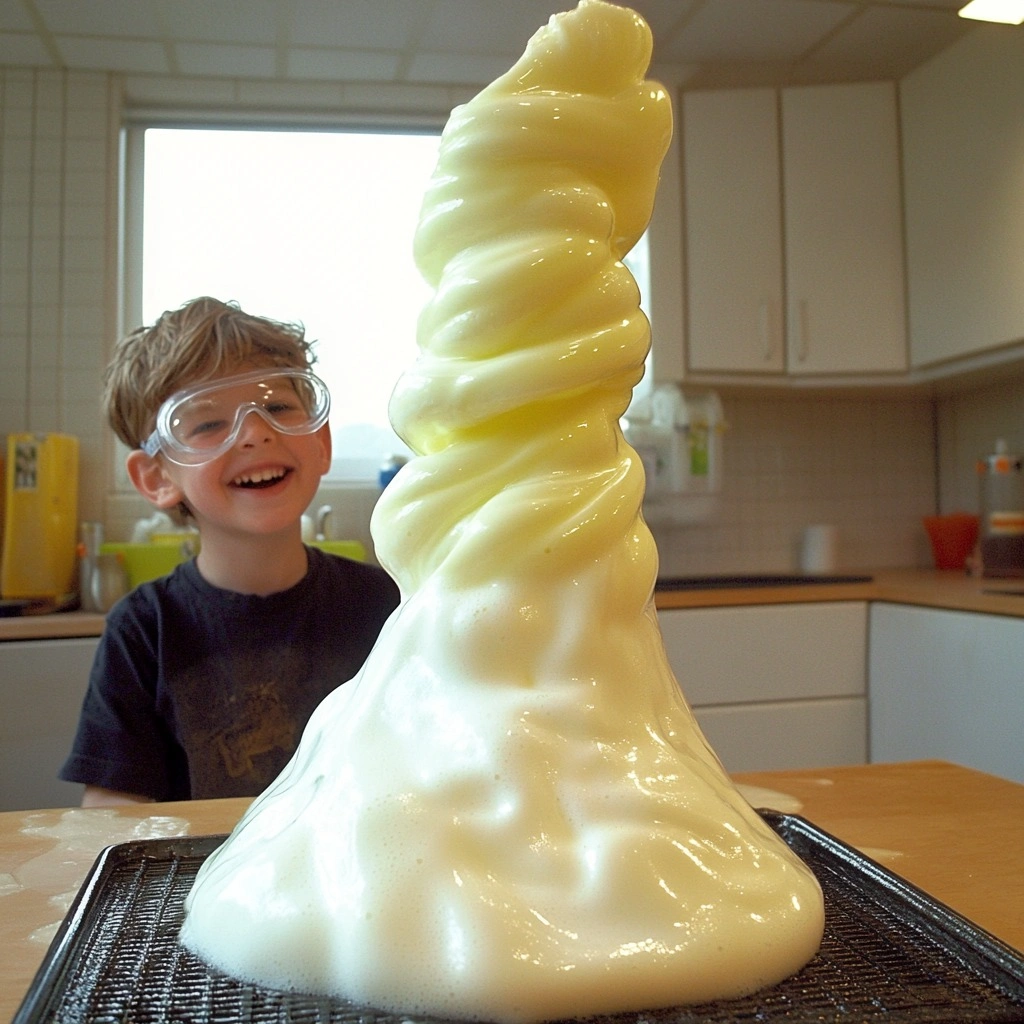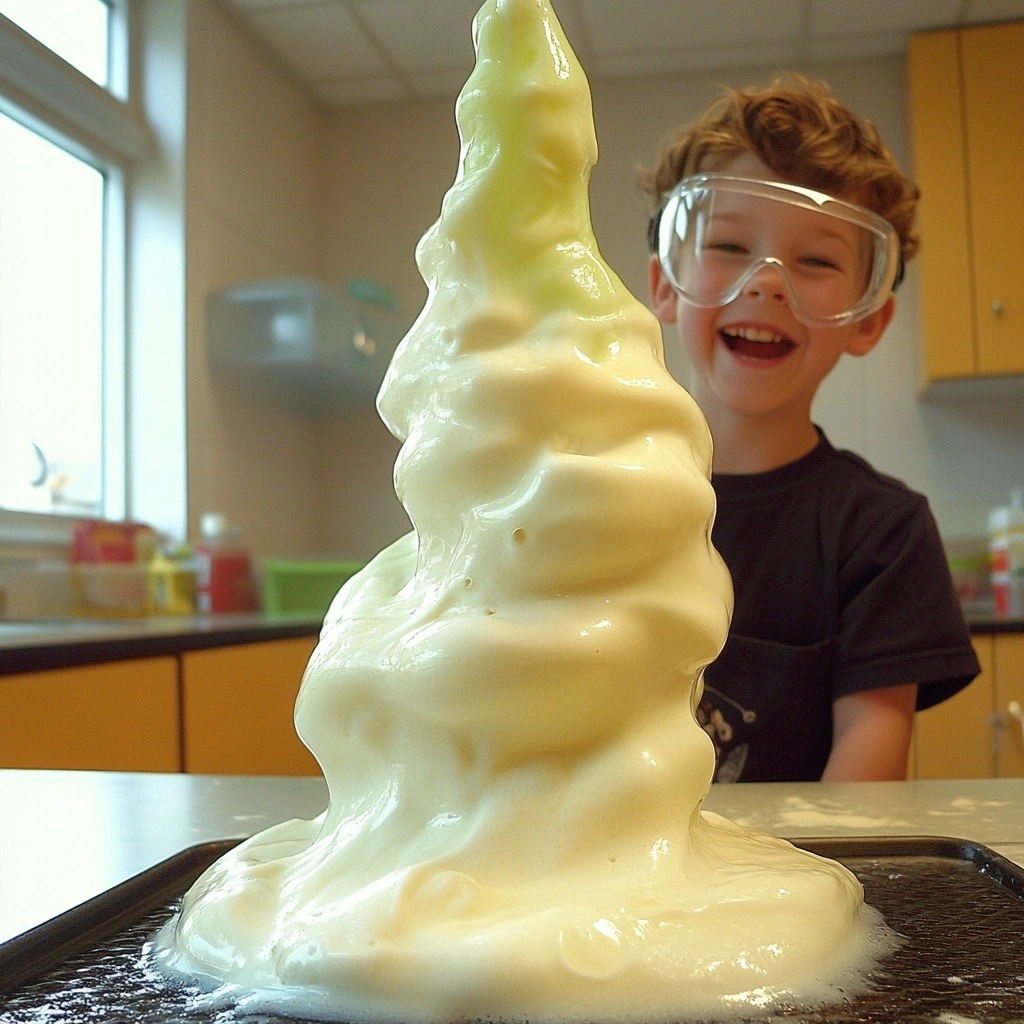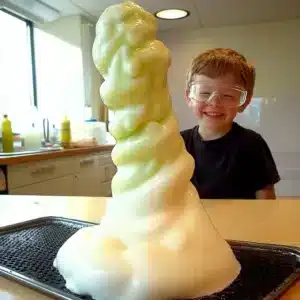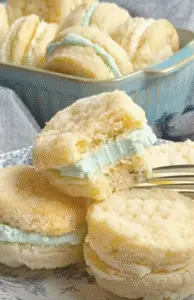
Introduction
Imagine a vibrant, frothy eruption that mimics toothpaste large enough for an elephant! The Elephant Toothpaste experiment is a captivating science activity that combines chemistry with visual excitement, making it a favorite among kids and adults alike. This experiment not only entertains but also educates, demonstrating the rapid decomposition of hydrogen peroxide catalyzed by yeast. It’s an excellent way to introduce young minds to chemical reactions in a safe and engaging manner.cookfastly.com+1livinglifeandlearning.com+1coolscienceexperimentshq.com
Why You’ll Love This Experiment
- Visually Stunning: The rapid foam eruption is a spectacle that captures attention instantly.
- Educational Value: Demonstrates exothermic reactions and the role of catalysts in a fun way.
- Easy to Set Up: Requires common household items and minimal preparation.
- Safe for Kids: When conducted with proper safety measures, it’s a safe experiment for children.
- Encourages Curiosity: Sparks interest in science and encourages further exploration.foamfanatic.com
Ingredients
- ½ cup (120 ml) of 6% hydrogen peroxide (available at beauty supply stores)
- A few drops of food coloring
- ½ cup (120 ml) of very warm water
- 1 packet (or ½ tablespoon) of active dry yeast
- Dish soap
- Recycled plastic water bottle
- Funnel
- Tray to catch overflow
- Measuring cups and spoons
- Safety goggles
- Plastic glovesweareteachers.comthoughtco.com+3coxsciencecenter.org+3perkins.org+3perkins.orglearningmole.com
Necessary Tools
- Plastic Water Bottle: Acts as the reaction vessel.
- Funnel: Helps in pouring liquids without spills.
- Tray: Catches the overflowing foam, making cleanup easier.
- Measuring Cups and Spoons: Ensure accurate measurements for consistent results.
- Safety Goggles and Gloves: Protect eyes and skin from potential irritants.stevespangler.com+3suchscience.net+3learningmole.com+3coolscienceexperimentshq.com+5learningmole.com+5sciencebuddies.org+5

Ingredient Swaps and Additions
- Hydrogen Peroxide: If 6% is unavailable, 3% can be used, though the reaction will be less vigorous.
- Yeast: Potassium iodide can serve as an alternative catalyst, producing a faster reaction.
- Dish Soap: Any liquid dish soap works; however, using a brand that produces more bubbles can enhance foam production.
- Food Coloring: Gel-based colors provide more vibrant hues.
- Additions: Glitter can be added for a sparkling effect, but ensure it’s safe and non-toxic.suchscience.net+4learningmole.com+4cliffscientificworld.com+4coolscienceexperimentshq.com
Step-by-Step Instructions
- Set Up Your Workspace: Place the plastic bottle in the center of the tray. Ensure you’re wearing safety goggles and gloves.
- Add Dish Soap: Squirt a generous amount of dish soap into the bottle.
- Add Hydrogen Peroxide: Using the funnel, pour ½ cup of hydrogen peroxide into the bottle. Gently swirl to mix with the dish soap.
- Add Food Coloring: Add a few drops of food coloring into the mixture for visual appeal. Swirl gently to combine.
- Prepare Yeast Mixture: In a separate bowl, mix the yeast with very warm water. Stir until the yeast dissolves completely.
- Initiate the Reaction: Quickly pour the yeast mixture into the bottle using the funnel. Step back and observe the foamy eruption!learningmole.com
Pro Tips for Success
- Temperature Matters: Ensure the water used to activate the yeast is warm but not hot, as extreme temperatures can kill the yeast.
- Quick Pour: Pour the yeast mixture swiftly to ensure a rapid reaction.
- Safety First: Always wear protective gear, and conduct the experiment in a well-ventilated area.
- Cleanup: Have towels or paper towels ready for any spills. The foam can be disposed of in the sink with plenty of water.onelittleproject.com+2suchscience.net+2learningmole.com+2learningmole.com+1coolscienceexperimentshq.com+1
Serving Suggestions
While this experiment isn’t edible, presenting it in a fun and engaging way enhances the experience:
- Themed Science Day: Incorporate the experiment into a science-themed day with related activities.
- Educational Demonstration: Use it to explain chemical reactions, catalysts, and exothermic processes.
- Party Entertainment: A great addition to children’s parties for an interactive science show.coolscienceexperimentshq.com+1suchscience.net+1
Storing and Reheating
The Elephant Toothpaste experiment is a one-time reaction and doesn’t require storage or reheating. However, leftover materials like yeast and hydrogen peroxide should be stored properly:learningmole.com
- Yeast: Store in a cool, dry place or refrigerate to extend shelf life.
- Hydrogen Peroxide: Keep in a dark, cool place away from direct sunlight to maintain its effectiveness.
Nutritional Information
Not applicable, as this is a science experiment and not intended for consumption.

FAQs
Q1: Is Elephant Toothpaste safe to touch?
A1: After the reaction has subsided and the foam has cooled (usually after a few minutes), it’s generally safe to touch. However, always supervise children and ensure they wash their hands afterward.coolscienceexperimentshq.com
Q2: Can I use 3% hydrogen peroxide?
A2: Yes, 3% hydrogen peroxide can be used, but the reaction will be less vigorous compared to using 6%.
Q3: What does the yeast do in the experiment?
A3: Yeast contains an enzyme called catalase, which breaks down hydrogen peroxide into water and oxygen, creating the foamy eruption.
Q4: Can I add glitter to the mixture?
A4: Yes, adding glitter can enhance the visual appeal. Ensure the glitter is non-toxic and safe for use.
Q5: Why is it called Elephant Toothpaste?
A5: The foam produced resembles a giant stream of toothpaste, humorously suggesting it’s suitable for an elephant.foamfanatic.com+2onelittleproject.com+2livinglifeandlearning.com+2
Conclusion
The Elephant Toothpaste experiment is a delightful blend of education and entertainment, offering a hands-on approach to understanding chemical reactions. It’s an excellent activity for classrooms, science fairs, or just a fun day at home. Remember to prioritize safety, supervise young participants, and most importantly, enjoy the foamy fun!

Elephant Toothpaste
Ingredients
Method
- Place the plastic bottle in the center of the tray. Ensure you’re wearing safety goggles and gloves.
- Squirt a generous amount of dish soap into the bottle.
- Using the funnel, pour ½ cup of hydrogen peroxide into the bottle. Gently swirl to mix with the dish soap.
- Add a few drops of food coloring into the mixture for visual appeal. Swirl gently to combine.
- In a separate bowl, mix the yeast with very warm water. Stir until the yeast dissolves completely.
- Quickly pour the yeast mixture into the bottle using the funnel. Step back and observe the foamy eruption!




